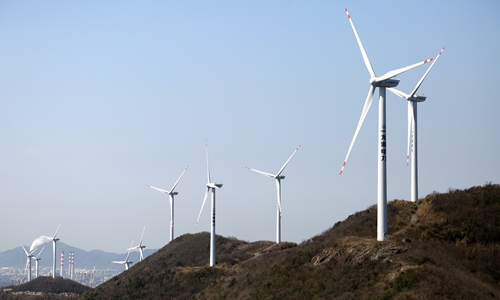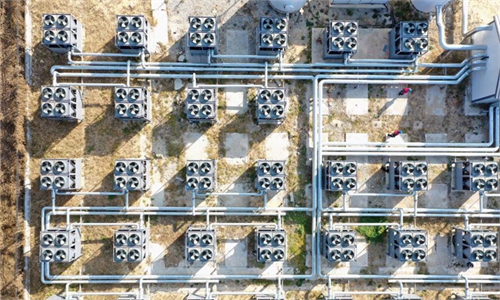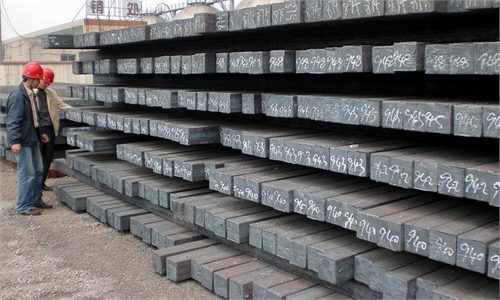Shanghai’s carbon emissions trading scheme reduces CO2 emissions by 7 percent in 2013-19

17 turbines generate electricity at the Jintangfeng wind farm in Zhoushan, East China's Zhejiang Province Photo: cnsphoto
Shanghai aims to bring carbon dioxide emissions to a peak before 2025, five years ahead of the national target, just as the city wrote in its 14th Five-Year Plan (2021-25) for economic and social development and outlined its long-term goals for 2035.
In order to fulfil the commitment, the city will carry out several measures including promoting clean energy and energy efficiency, for instance; the total coal consumption will be capped at about 43 million tons by 2025. The share of local renewable energy in total electricity consumption will increase to around 8 percent, according to local authorities.
As one of the seven pilot provinces and cities to initiate carbon emission rights trading since 2013, Shanghai has also carried out multiple policies to push forward the market.
Currently, the carbon emission rights trade is "adjusted by the market," Zhou Jun, head of the division of atmospheric environment and climate change of the Shanghai Bureau of Ecology and Environment, told the Global Times in an exclusive interview.
The trading market has been tested effective to reduce carbon emissions via the seven years' trial, for instance, from 2013 to 2019, carbon emissions by over 300 firms under the carbon emissions quota mechanism by Shanghai authorities "has reduced by 7 percent," with major industries in electricity, petrochemicals and steel, down 8.7 percent, 12.6 percent and 14 percent, respectively, Zhou said, noting that the market has played an important role in adjusting the industry.
For instance, out of 105 million tons of carbon emission quotas in 2020, each company gets a quota. If a firm emits more carbon dioxide than its quota, it needs to buy more quotas on the market.
If a firm fails to fulfill its commitment, it will also pay penalties and its credit will also be affected, Zhou said, noting that, under this mechanism, enterprises have to seek measures such as increasing the use of renewable energy and developing climate-smart technologies to lower carbon emissions.
Boosting green finance
For BASF China, the company adopted a three-pronged approach: increasing production and process efficiency, purchasing electricity from renewable sources, and developing new low-emission technologies and processes to reduce carbon emissions from 2030 onward, according to a statement sent from BASF China to the Global Times.
Fuel consumption for BASF China's central energy supply in 2019 was 10 percent lower than 2018, totaling 871,900 MWh (2018: 974,394 MWh), according to BASF China.
Along with these measures, experts also called for developing green finance. Enterprises can "use their good green credit and green assets" to apply for commercial banks' "green financial products" such as energy-saving loans, green loans and sustainable development performance related loans to obtain low-cost financing, James Chang, PwC China Consulting Leader told the Global Times on Monday.
It's also a good choice to use financial instruments such as carbon futures, carbon options to hedge the risks, Chang noted.
As a metropolis with over 20 million residents, Shanghai needs to further increase the share of renewable energy in total electricity consumption, such as the development of photovoltaic and wind power projects, according to Chang.


